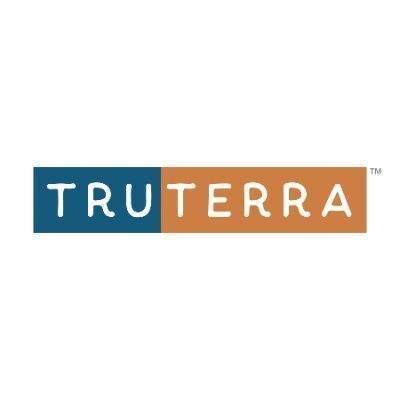Truterra offers unique pilot soil assessment service

A unique, innovative program on soil health and carbon metrics is looking for farmers, growers and ranchers to participate. According to Matt Duncan, senior sustainability and science lead at Truterra, farmers can enroll their fields though the network of thousands of ag retailers who are participating in the recruitment effort or find more information online. “First, check with your local ag retailer to see if they are working with Truterra. If not, go to Truterraag.com/enroll. We have thousands of boots on the ground that know your region and your crop,” he told High Plains Journal. Truterra is the sustainability business of Land O’Lakes.Using Truterra’s unique soil assessment metrics, the program should provide robust soil data across crop lines and regions that could also support participation in other programs that could help farmers generate revenue, such as carbon credits.
It’s the total soil health assessment metrics, Duncan said, that make this program different from programs that only measure soil carbon. “There’s no one else providing exactly what we’re providing,” he told HPJ. The fact that the program is operating through ag retailers is also a differentiating factor, he said.
The Truterra soil health assessment looks at more than just organic carbon, Duncan said. “We look at the chemical, physical and biological components of soil health,” examining questions like microbial activity in a soil sample via the rate of CO2 respiration (i.e., the microbes breathing), aggregate stability, compaction and more. Results have to be put into a local context to understand their implications for the soil health status and given ranges.
Pioneering grant awarded
In September, the United States Department of Agriculture awarded a $90 million grant, as part of the U.S. Department of Partnerships for Climate-Smart Commodities investment, to a Truterra pilot soil health project. This project is the only USDA-funded one with a national scope. Agriculture Secretary Tom Vilsack recently visited River Falls, Wisconsin, to launch the project at a press conference, along with Land O’Lakes CEO Beth Ford.
“The goal of our USDA project is to enable the technical, financial, and data infrastructure services needed for retail ag to deliver and better support farm operations in the adoption Climate-SMART, sustainable, and regenerative recommendations and services. The two programs are complimentary, because the USDA project scope includes soil health, but we are not using USDA grant funding for the Truterra soil health assessments,” said Duncan.
The USDA project hopes to engage up to 20,000 farmers and dairy producers over the course of five years, with a focus on reaching historically underserved farmers, and will eventually affect more than 7 million acres of land. It hopes to become self-sustaining by the end of the five-year period by selling carbon credits.
Aggregate stability
Aggregate stability, said Duncan, is a measurement that combines chemical, biological and physical properties of the soil and is a rough proxy for measuring overall soil health. There are two primary ways to measure it, one of which involves putting soil samples in a water-filled Petri dish and filming them with a video camera to time how fast the aggregates collapse and spread out.
Given what’s at stake, soil samples must be collected vary carefully, according to standard protocols, like collecting evidence at a crime scene. In fact, said Duncan, he did research on soil handling this year. On site, the sampling team uses an instrument called a penetrometer that measure compaction. “It’s not a hard tool to use, nor is it expensive,” he said. Soil samples are usually taken from the top 6 to 12 inches, but a penetrometer can measure down to 20 inches. To obtain soil samples, he said, you just need a shovel, but packaging and handling are important to keep the integrity of the samples.
Unsurprisingly, the most common recommendations, Duncan said, are to reduce tillage and to plant cover crops. Which cover crops to suggest planting can depend on many things, including your region, the prior condition of the soil, the local weather and climate, and which crops you are rotating. Other recommendations can include compaction and equipment traffic management and refining the fertility management.
What’s the most significant development in soil health Duncan has seen in his 25 years of working in the field? “Just the fact that people are talking about it,” he said. He said interest in soil health has exploded in recent years.
Duncan’s interest in soil health goes back to his earliest years. “My mom recently found an eighth grade science project I had forgotten all about, and it was about water movement in soil. So I guess I’ve always been fascinated by soil health.” When he started out, though, he felt like a lonely pioneer. In fact, as he was working on a degree with a major in soil science, his university discontinued the degree program, downgrading soil science to an emphasis within agronomy. “During my first career job I worked as an agronomist, just because everything was crop-focused back then,” he said. His wife is also an agronomist, and in their household, Duncan joked, they don’t say something easy is “not like rocket science,” but that it’s “not like soil science.”
Carbon saturation
Duncan credits growing consumer awareness of food and the conditions of its production with the current focus on soil health. One of the questions he hopes to answer with the huge treasure trove of data that the program will generate is how long it takes for a field to reach maximum carbon absorption.
Some experts believe a given field can only absorb so much carbon before it plateaus, reducing its long-term value as a carbon credit provider. But Duncan believes “the carbon saturation point is farther off than most people think in many fields.”
David Murray can be reached at [email protected].
Clarification: The Climate Smart Commodities program and soil health program are two distinct entities. The soil health program has begun recruiting participating farmers.


